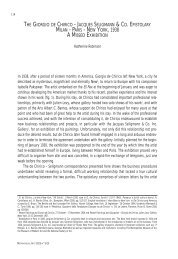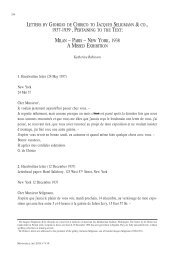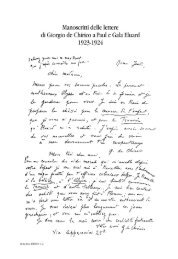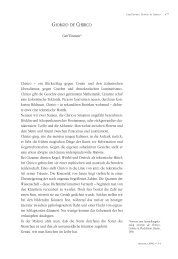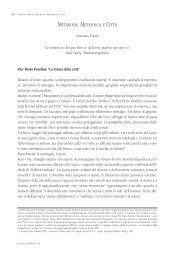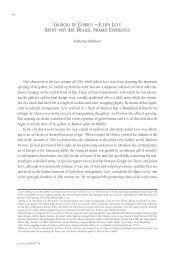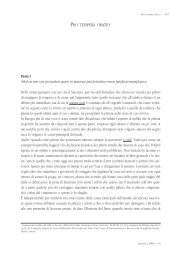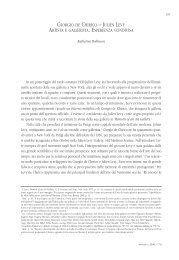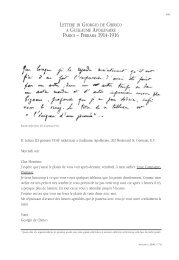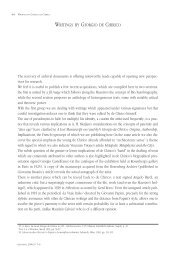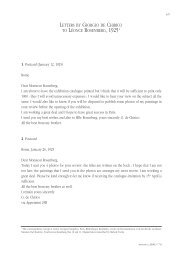Emplastic Oil - Fondazione Giorgio e Isa de Chirico
Emplastic Oil - Fondazione Giorgio e Isa de Chirico
Emplastic Oil - Fondazione Giorgio e Isa de Chirico
Create successful ePaper yourself
Turn your PDF publications into a flip-book with our unique Google optimized e-Paper software.
172<br />
SALVATORE VACANTI: FROM MURAL PAINTING TO “EMPLASTIC OIL”<br />
fig. 9 Letter by <strong>de</strong> <strong>Chirico</strong> to his<br />
friend Nino Bertoletti, Paris, 14<br />
October 1934<br />
which should be applied on the last layer once it has dried, in or<strong>de</strong>r to facilitate the sliding of the<br />
paintbrush on such an absorbent surface. However, because <strong>de</strong> <strong>Chirico</strong> was driven by a continual<br />
need to experiment, in the following years he proposed different formulas both for preparatory layers<br />
and for paint bin<strong>de</strong>rs in letters sent to colleagues and friends. In a missive sent from Paris to<br />
Carlo Carrà on 27 May 1931 he recommen<strong>de</strong>d a bin<strong>de</strong>r for a preparatory layer composed of various<br />
ingredients measured, like in a food formula, with “a soup spoon” or “a coffee spoon”: zinc<br />
white, Spanish white, calcium carbonate, linseed oil, damar or mastic varnish, milk, gelatin glue,<br />
glycerine and honey. This mix was to be applied on the canvas twice and, once it had dried, was<br />
to be smoothed with sandpaper and then covered with a layer of milk. 62<br />
Another <strong>de</strong>chirican practice for the execution of the preparatory layers may be found in a letter<br />
sent from Paris to Romano Gazzera on 10 August 1933. An unspecified “Blanche method” is advised:<br />
Would you like to experiment with a different method Take a piece of canvas for oil, the usual one,<br />
and cover it with white mixed with a small amount of black; dilute this extremely pale grey with turpentine<br />
essence and a few drops of Courtrai siccative; this layer will dry in two days after which you<br />
may paint on it with J. E. Blanche’s method 63 , wetting it first with oil; you can always go back to the<br />
bare canvas as long as you wet it first; the painterly material remains quite beautiful. 64<br />
On 14 October 1934, <strong>de</strong> <strong>Chirico</strong> wrote again from Paris to his friend Bertoletti suggesting yet<br />
another preparation method (fig. 9):<br />
62<br />
See <strong>Giorgio</strong> <strong>de</strong> <strong>Chirico</strong>, Ventisette lettere a Carlo Carrà, by M. Carrà, in “Paradigma”, n. 4, 1982, pp. 301-321.<br />
63<br />
He is certainly referring to Jacques Emile Blanche (1861-1942), a known portraitist from the Parisian Belle-Epoque period.<br />
64<br />
See M. Fagiolo <strong>de</strong>ll’Arco, op. cit., 1995, p. 144.<br />
METAPHYSICAL ART 2010|N° 9/10



